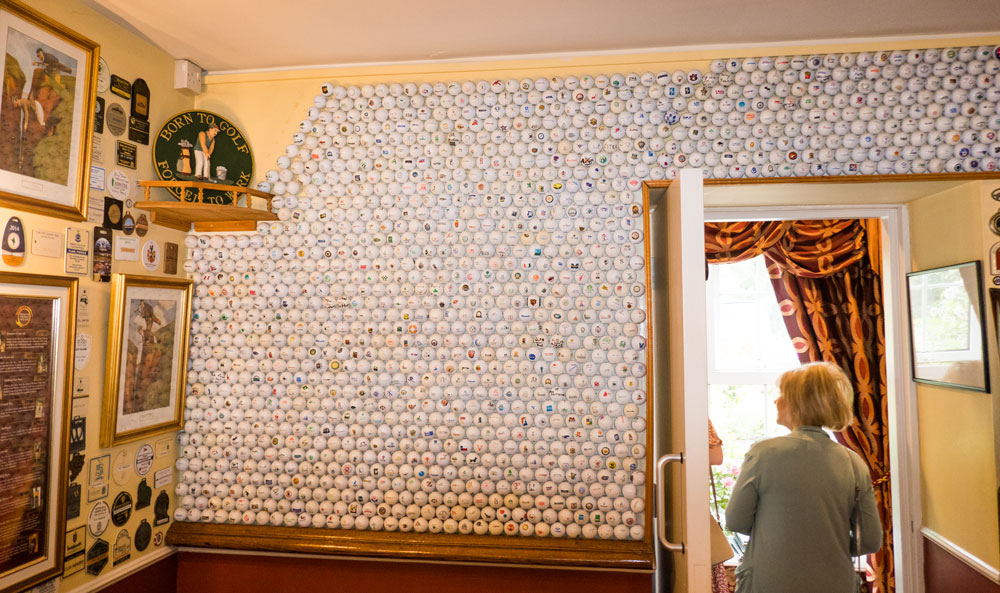
The Best of Ireland
Mike and Judy Henderson
May 26 - June 8, 2018
I'm going to leave the map at the beginning of each web page so you have a reference as to where we are.

++++++++++++++++++++++++++++++++++++++++++++++
6/4/2018 (Monday) We left Ennis this morning heading to Killarney. On the way, we stopped at the Deebert House Hotel to use the restrooms and to get a cup of coffee and a cookie or two.
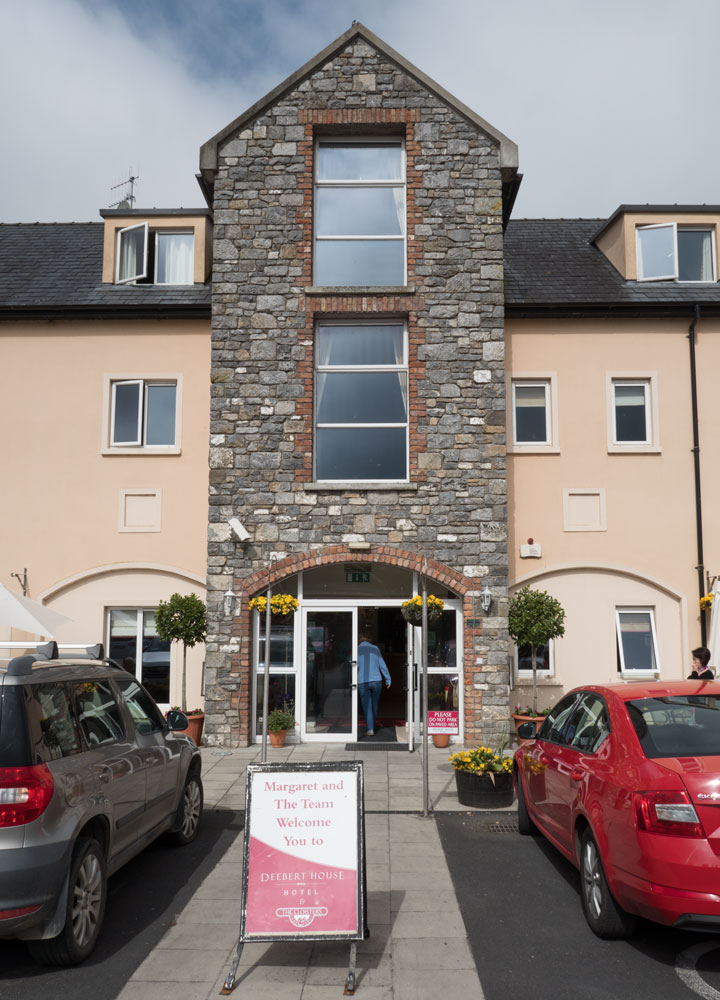
Here's the group in the hotel enjoying coffee.
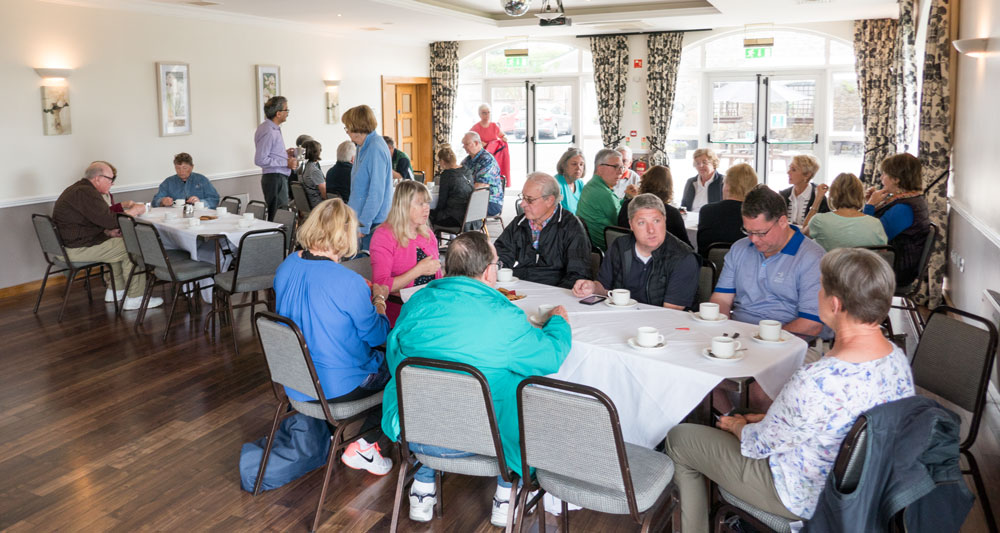
Then we went to the Molanna Dairy Farm, run by Paddy and Margret Fenton and their son, Patrick. They (actually, Patrick) milk 180 cows twice a day. They have some beef cattle, also.

Paddy took us to the original farm house, sat in front of the fireplace, and told stories of the farm and of Ireland.
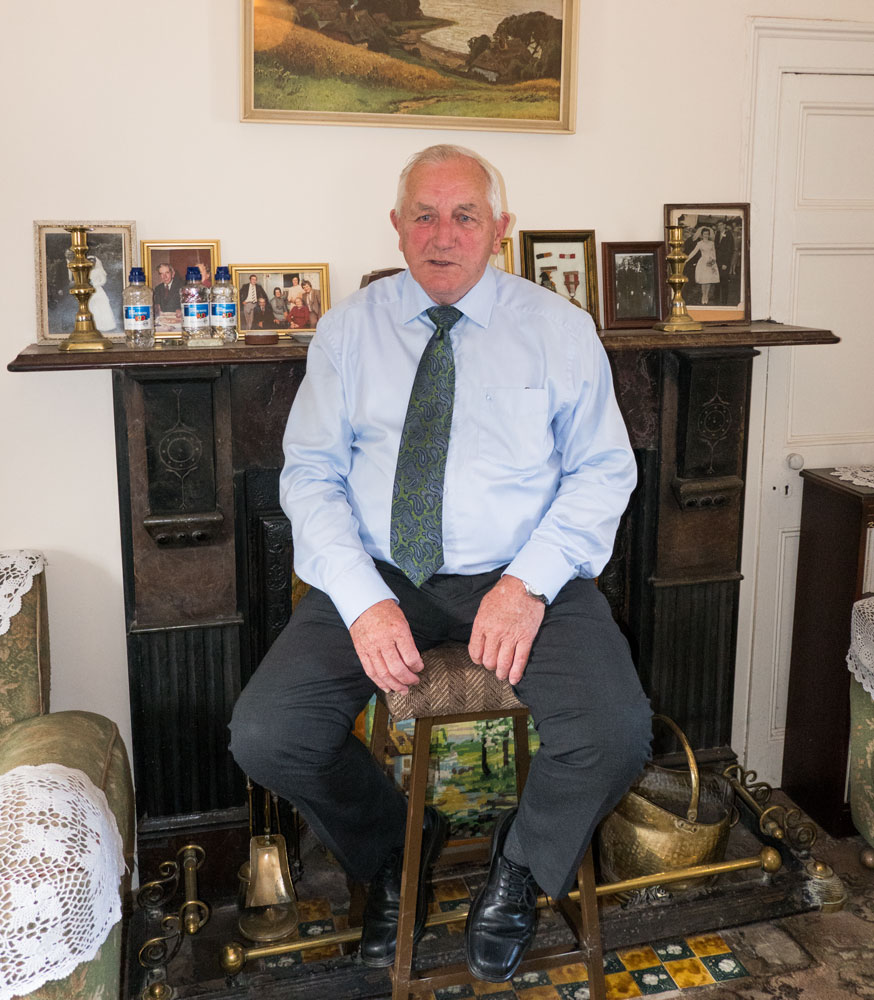
He closed by reciting a poem which he attributed to Mona Tierney entitled "What is it all when all is told". However, a search of the Internet does not turn up any Mona Tierney poetry except those pages which are about a tour of the Molanna Dairy Farm and describe Paddy reciting the poem. For those interested, here's what Paddy recited.
O What is it all when all is told?
This ceaseless toiling for fame and gold
The fleeting joy of bitter tears.
We're only here for a few short years.
Nothing's our own save the silent past,
Loving or hating-no thing can last.
Each pathway leads to a silent fold
O What is it all when all is told?
What is it all a grassy mound
Where day or night there is never a sound
Save the soft low moan of the fanning breeze
As it lovingly rustles the
silent trees.
Or a thoughtful friend with a whispered prayer
May sometimes
break the stillness there
Then hurry away from the gloom and the cold.
O
What is it all when all is told?
What is it all just passing true
A cross for me and a cross for you.
Ours
seems heavy while others seem light
But God in the end makes all things
right.
He tempts the mind with loving care
He knows the burden that each
can bear
Then turns life's grey into loving gold
O What is it all when all
is told?
Next Paddy took us to the milking shed. They have a fairly modern milking shed. The cows come in on both sides and go to a feed box where cow feed has been placed. Patrick works from the center, washing the udder of each cow before attaching the milking machine to her teats. Paddy reported that it takes about four hours to milk the 180 cows and then clean the shed afterwards. The milk never touches air - it is carried by stainless steel pipes to a cooling tank where it's held until the tanker truck comes to pick it up.

Milking is done twice a day, the first milking very early in the morning and the second 12 hours later. A Holstein cow weighs about 1,500 pounds and can produce seven or eight gallons of milk per day, while eating about 100 pounds of food (commercial cow feed, grass, silage and hay). Cows must be "freshened" annually (meaning they have a calf) or they will cease giving milk. The male calves normally wind up as veal since they have no value as dairy animals.
Here are some of the calves from the annual freshening. Calves are born throughout the year so that the farmer has milk all year. If they were all born at one time of the year, there would be a period of no milk for the farmer. The milk for a period of time after giving birth is colostrum and not suitable for sale.
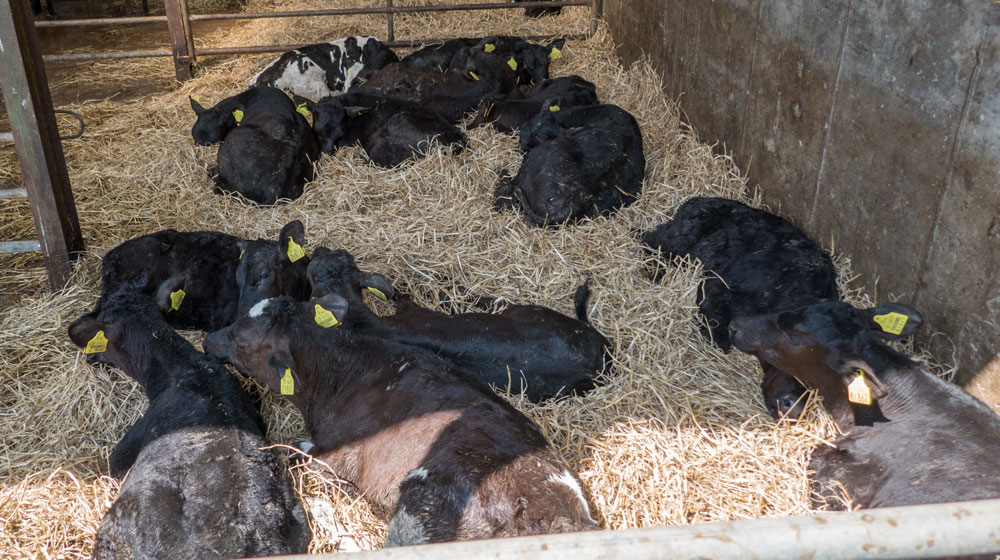
Then it was time for lunch in the current farm house.

Margret, Paddy's wife came and chatted with us. Here she is with Patrick's 10 year old son, William.

And this is Patrick's wife and their seven year old son Kevin.

From the farm, we drove to Killarney where we visited the Muckross House. It was completed in 1843, just before the the Great Famine. It was a bit upsetting to see the splendor the family lived in during the Irish Catholic Holocaust. The house and land were donated to Ireland in 1932, along with 11,000 acres of land and is now part of a National Park.
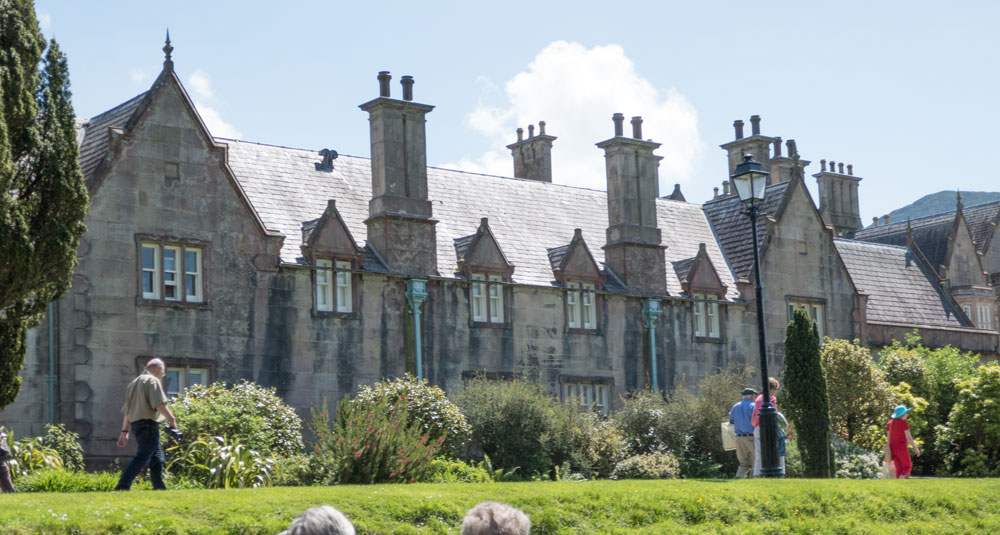
Tauck had a photographer take the group picture at the Muckross House. I gave the photographer my card and asked him to email me a digital copy of the picture. Although he promised to do so, I could tell he wasn't very interested in doing that, and sure enough, I never received it. I wish Tauck would require their photographers to supply a digital picture that can be shared among the members of the tour.
I was going to scan the paper copy but when we got home, we couldn't find it - which is the problem with paper copies.
[Edit 6/11/2018] Sue Gubing sent me a scan of the group picture - Thanks Sue!
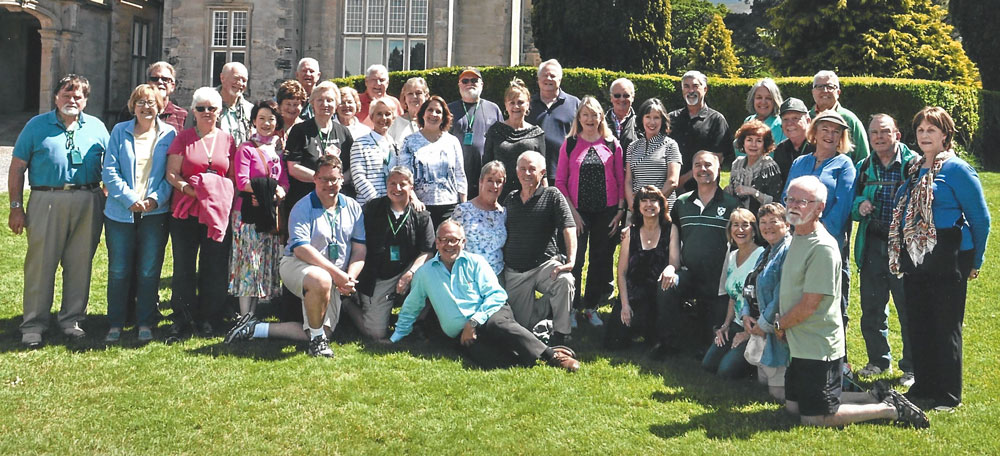
Judy and I are at the estate.
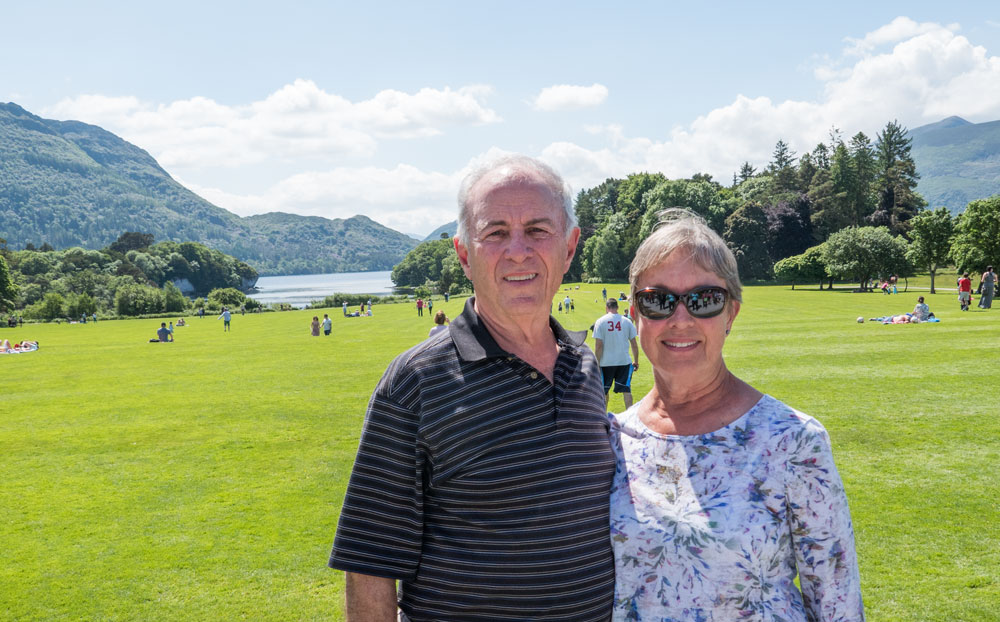
Pictures were not allowed in the house. After we completed the tour, we drove to our hotel, Aghadoe Heights Hotel. It appears to be a nice hotel - the air conditioning works and the Internet access is quick. Here's a panoramic view of the front of the hotel that I took the next morning.

We had dinner in the hotel dining room while enjoying this marvelous view.
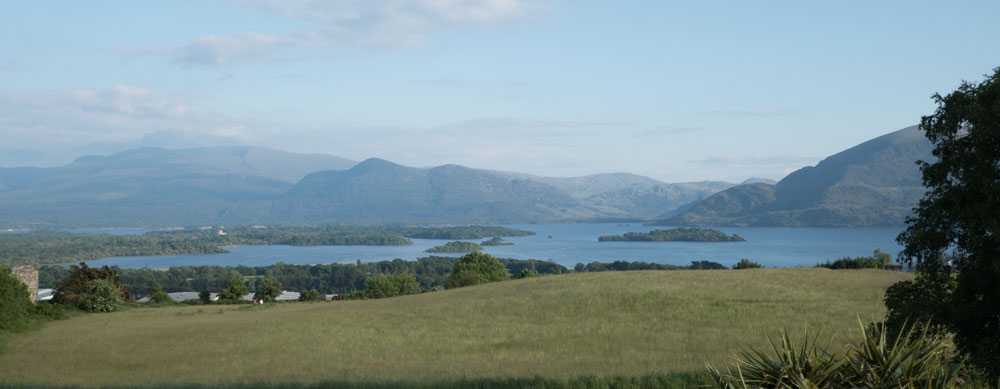
+++++++++++++++++++++++++++++++++++++++++++++++++++++++++++++++
6/5/2018 (Tuesday) We are to drive the Ring of Kerry today. The Ring of Kerry is a 111 mile circular road route on the Iveragh Peninsula in southwest Ireland.

Our first stop was at Gortaforia or Gleensk (I didn't get the location while we were there and those were the names that the Apple iPhone assigned to the pictures) for a sheep dog demonstration.
When we arrived at the demonstration area, there were several varieties of sheep in a pen.

The shepherd, who is also the dog trainer, went into the pen and began to talk to us, describing the different sheep. These sheep are not going to be used in the demonstration but are there to show the different kinds of sheep that are in this area.

Here's a really unusual one. Two sets of horns!

Then we moved to a large pasture that went up the hillside. We could see six white dots at the top of the pasture. I didn't take a picture of that, but here are the sheep after they were brought down from the hill.

The shepherd/trainer gave commands to the dogs verbally and with a high frequency whistle.
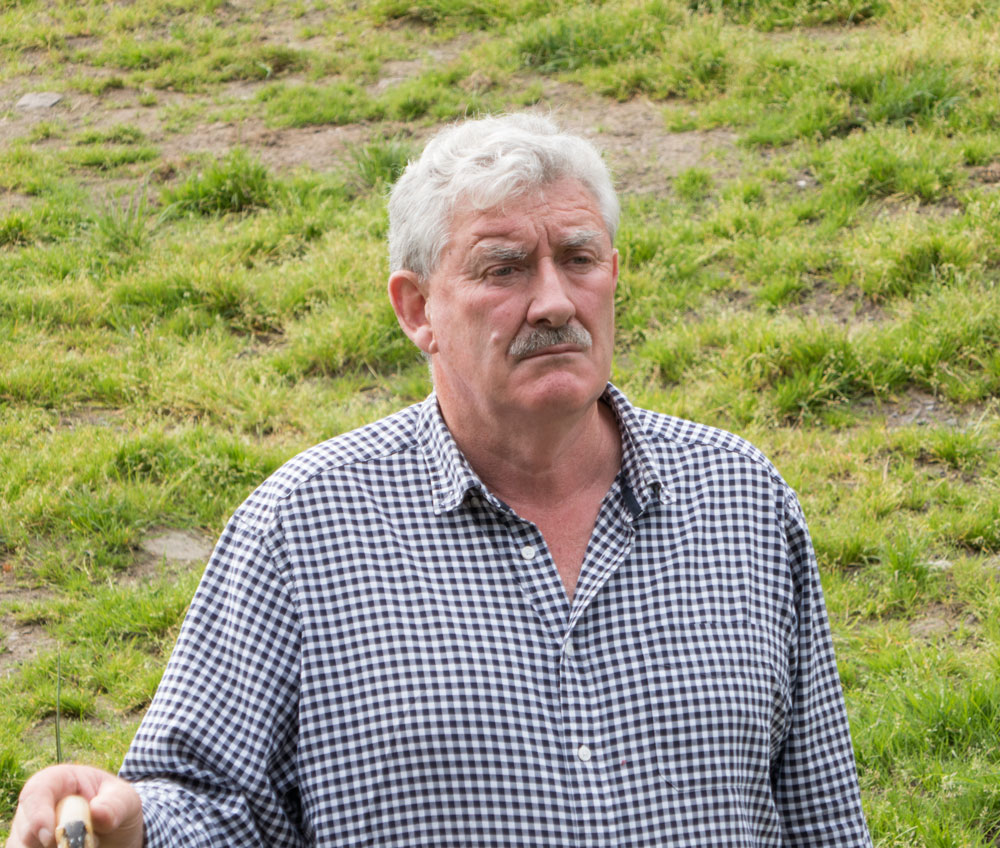
Here's one of the dogs bringing the sheep down the hill.

He brought them to the corner of the pasture, in front of us.
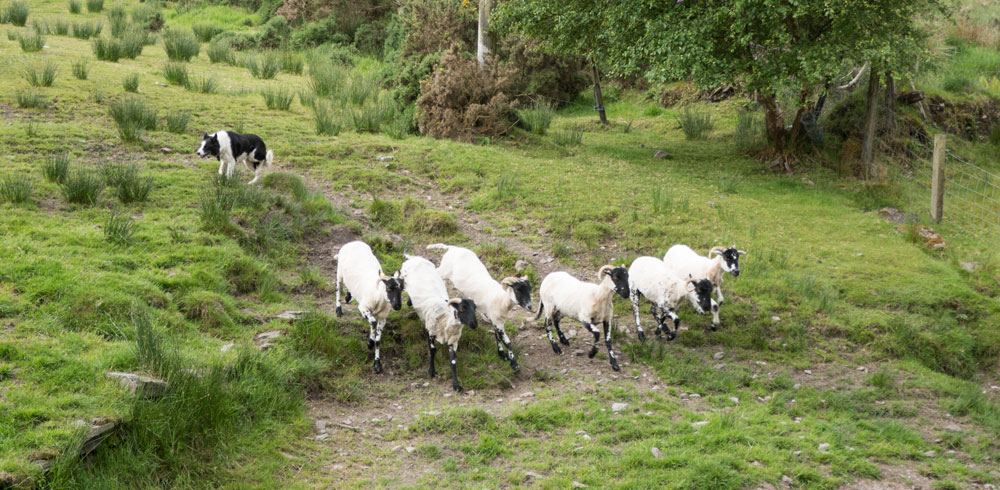
And there they were. As soon as the dog backed off, the sheep went back to grazing.
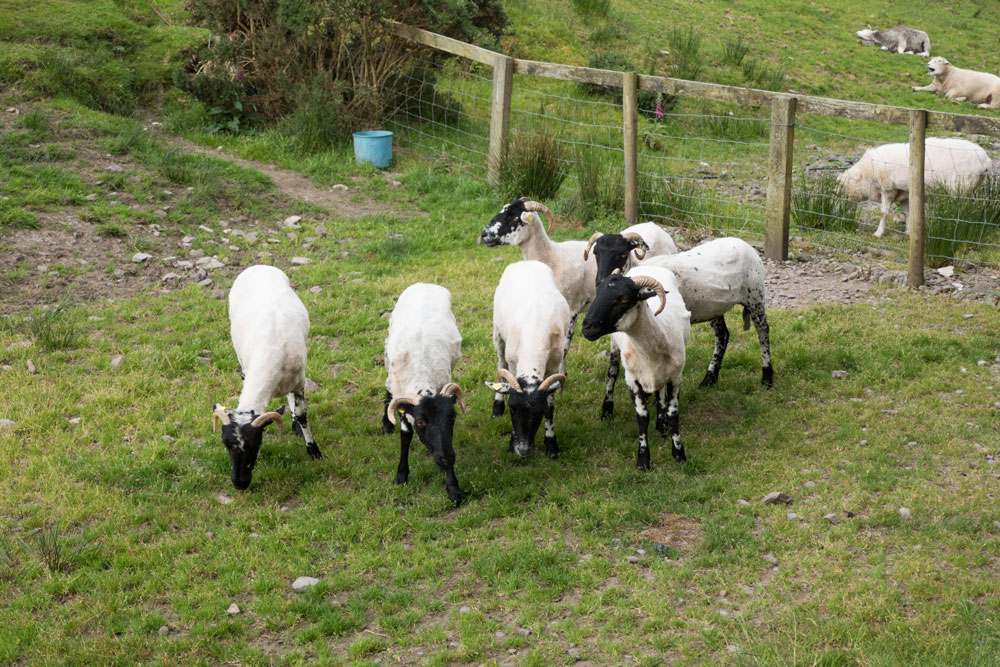
After another demonstration, the shepherd/trainer brought the sheep right in front of us. You can see the two dogs watching the corners. The sheep are not upset, even though they had been herded around the pasture.
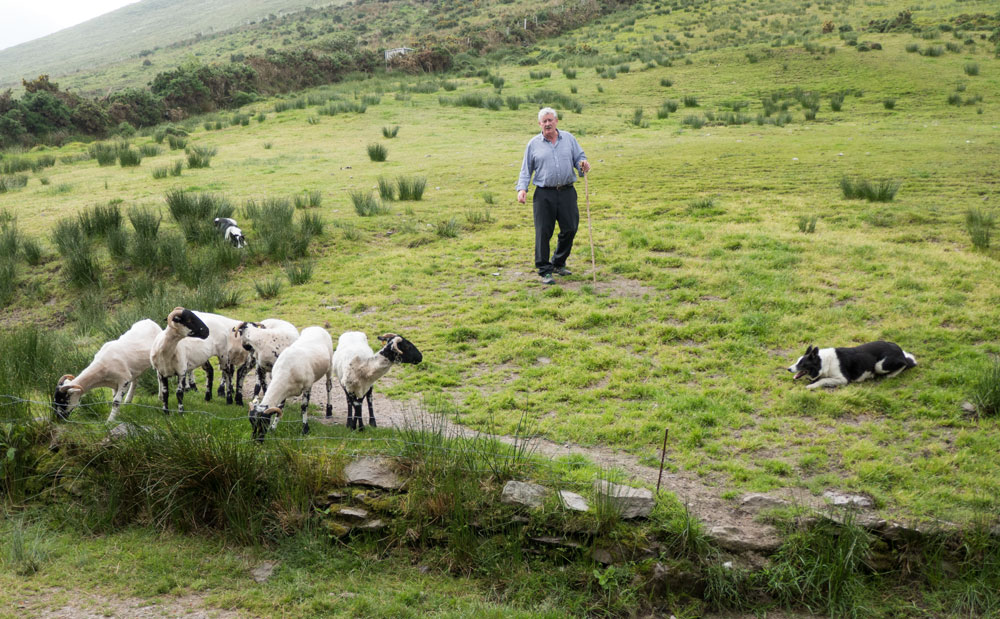
And a close-up of one of the dogs.
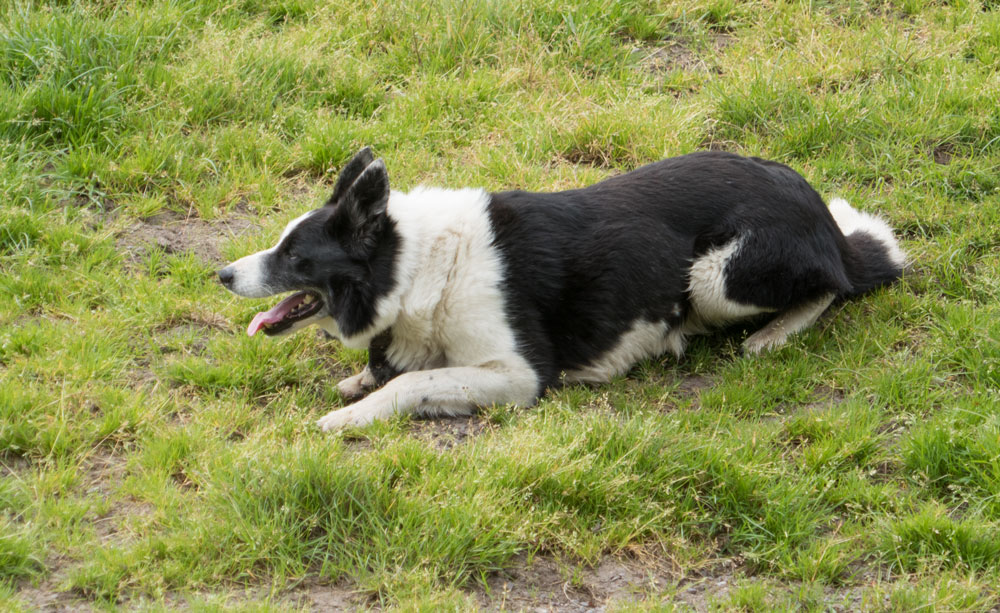
Judy and I had seen demonstrations of sheep herding with dogs, but these were definitely the best we had ever seen. The dogs were very well trained and performed exactly as the shepherd commanded.
After we moved on, we drove by the ruins of the house where Michael Collins was born. It looks like they've begun some renovation.
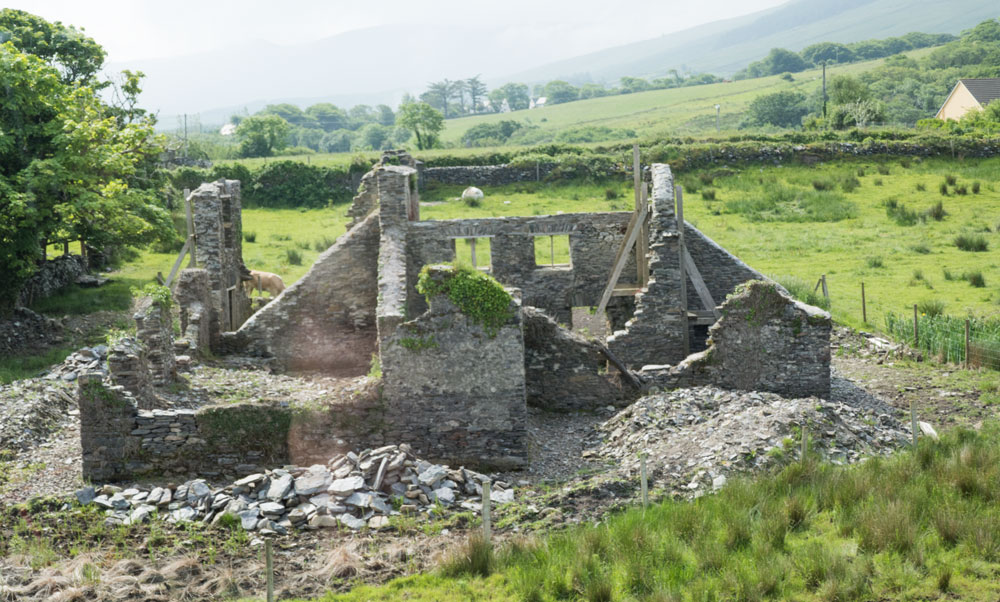
Then we came to Waterville. Charlie Chaplin loved to go fishing, and used to vacation in Waterville. There's a statue of him at the beachfront.
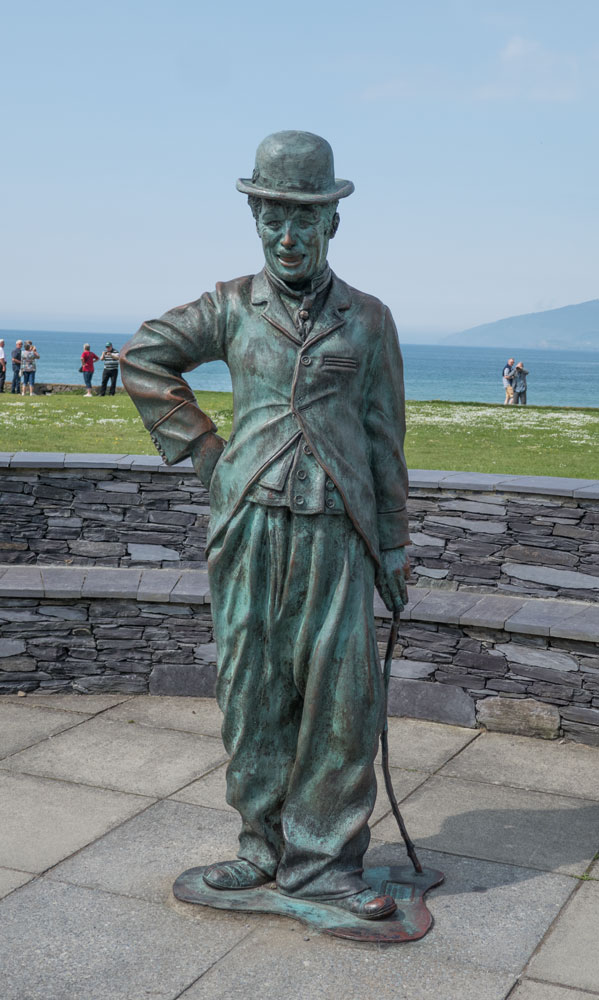
Waterville has the additional distinction of being the European end of the first transatlantic telegraph cable. The cable failed after three weeks but it opened the way for later successful transatlantic telegraph cables. Today's communication across the Atlantic is by optical fiber communication cables.
We had lunch in Waterville at the Sea Lodge. It faced the water and gave us a beautiful view.

Here's the group at lunch.
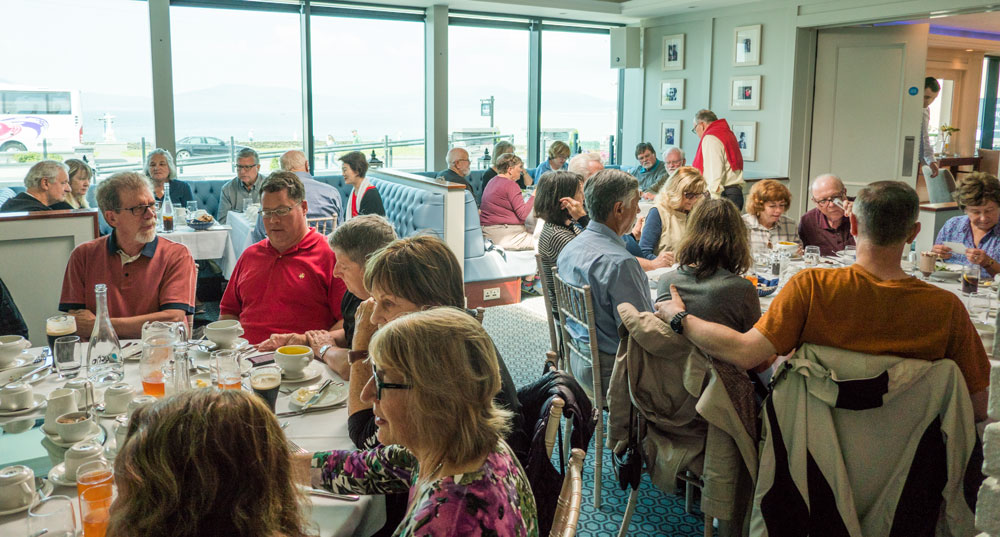
Next we drove along the Ring of Kerry to an scenic parking place overlooking Ballinskelligs Bay. On the valley side is Loher Stone Fort, a reconstruction of an early pre-Christian ring fort. I couldn't find the date of the reconstruction, but I think it's fairly recent.

Judy is looking over Ballinskelligs Bay.
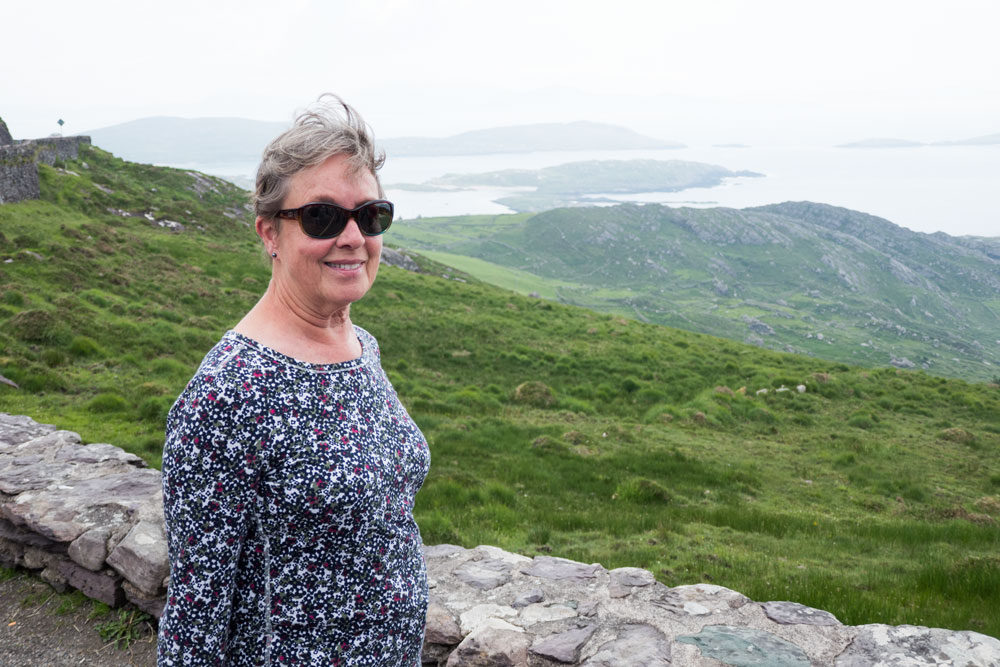
Further along, we stopped at a gift shop to use the facilities.
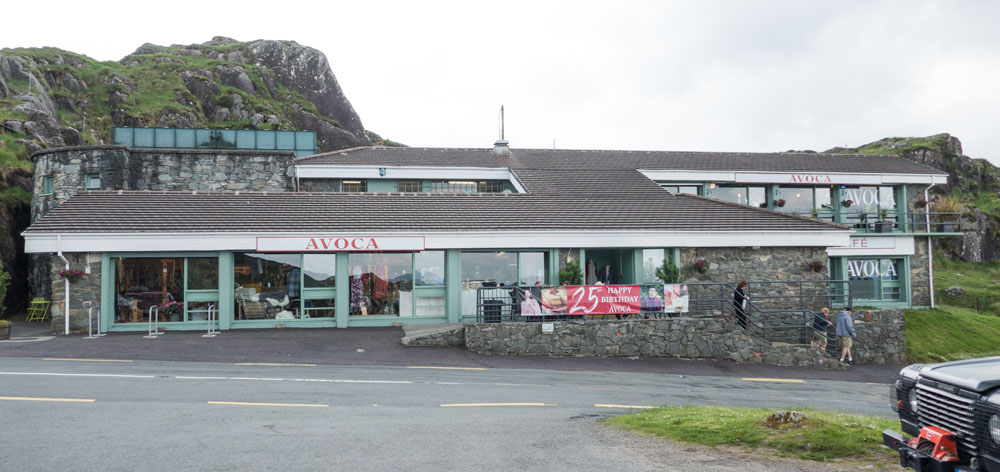
There was lots of beautiful scenery on the drive, but it's almost impossible to capture with a camera. Here's one attempt.
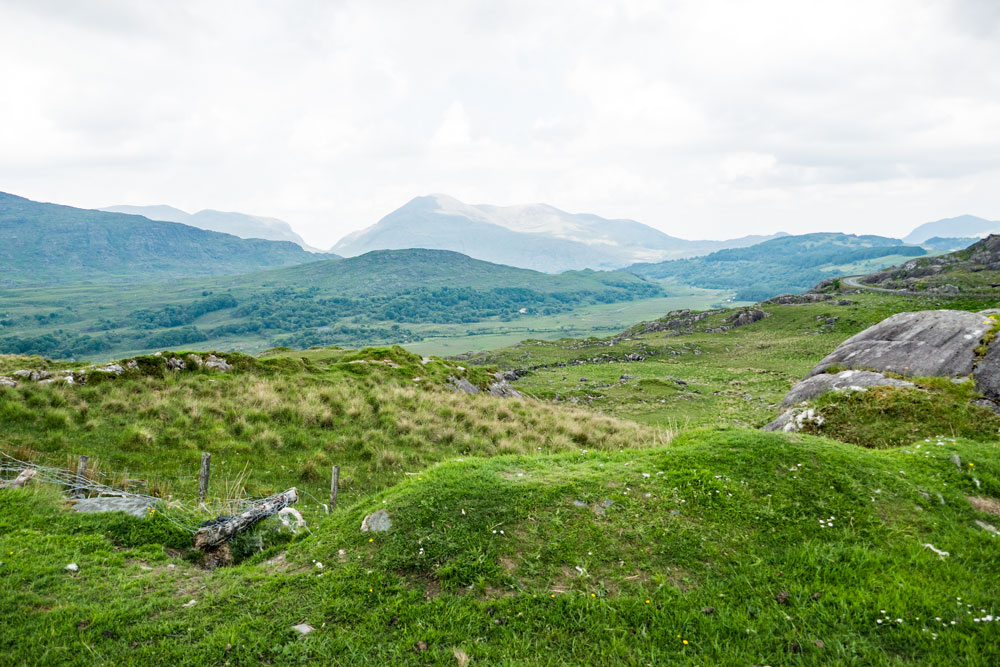
The roads in Ireland (and England) are very narrow. Even this Ring of Kerry road - which gets lots of tourist traffic - is very narrow and curvy.
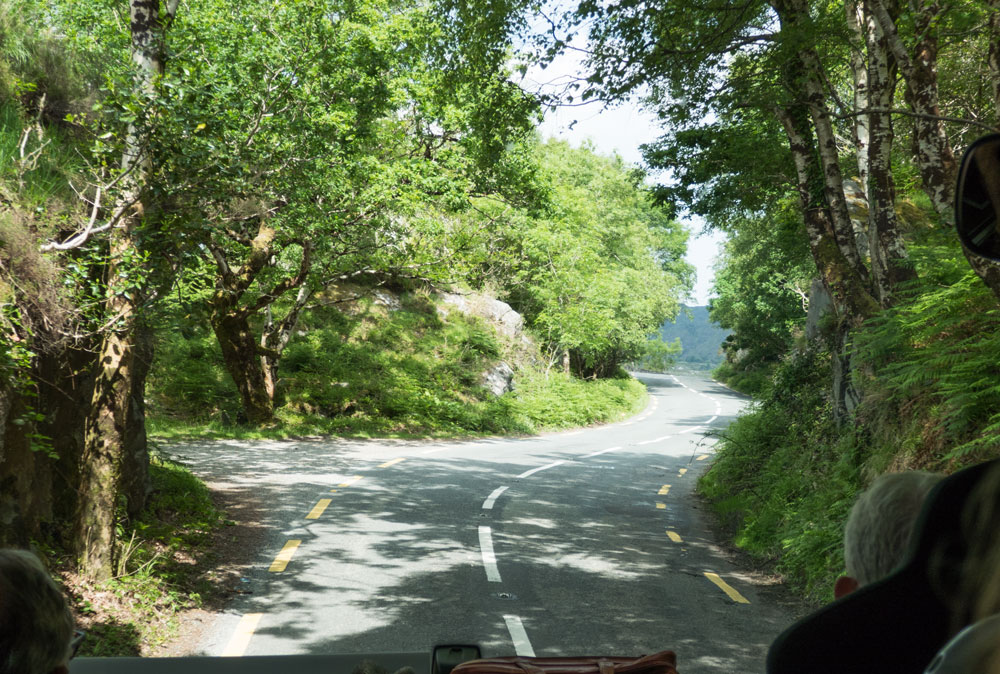
It's so narrow that oncoming traffic has to pull over to the side of the road and stop to let the bus get by. Tour buses travel the road counter-clockwise and cars travel clock-wise to minimize tour bus nose-to-nose encounters.
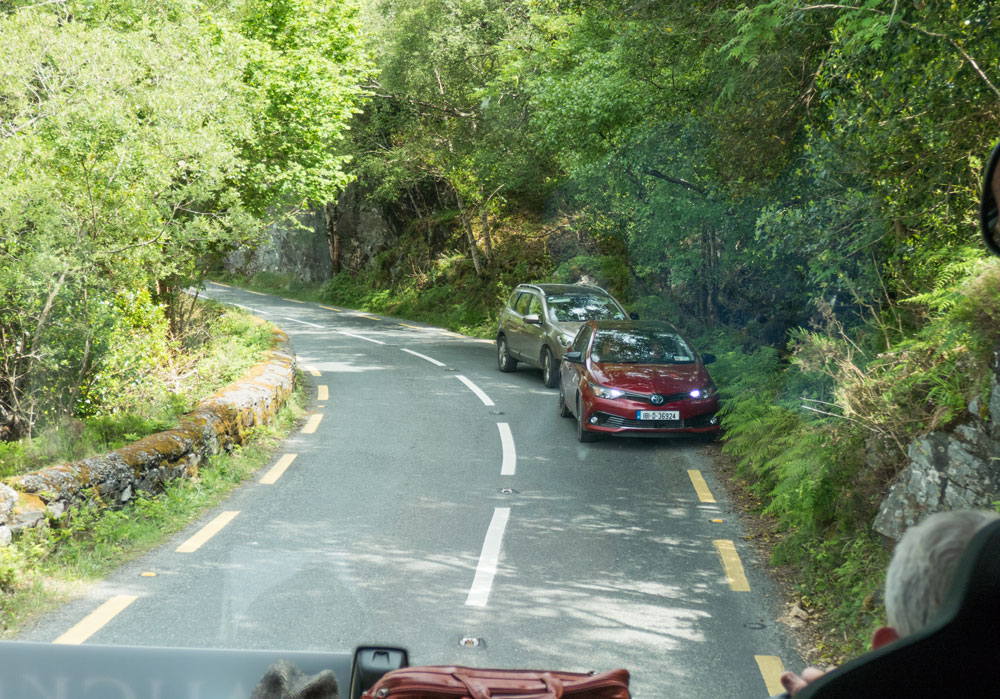
After we got back to the hotel Judy and I went across the street to see the ruins of a 7th Century church and a cemetery. The cemetery must be much newer because the oldest date I could find on a tombstone was around 1840.
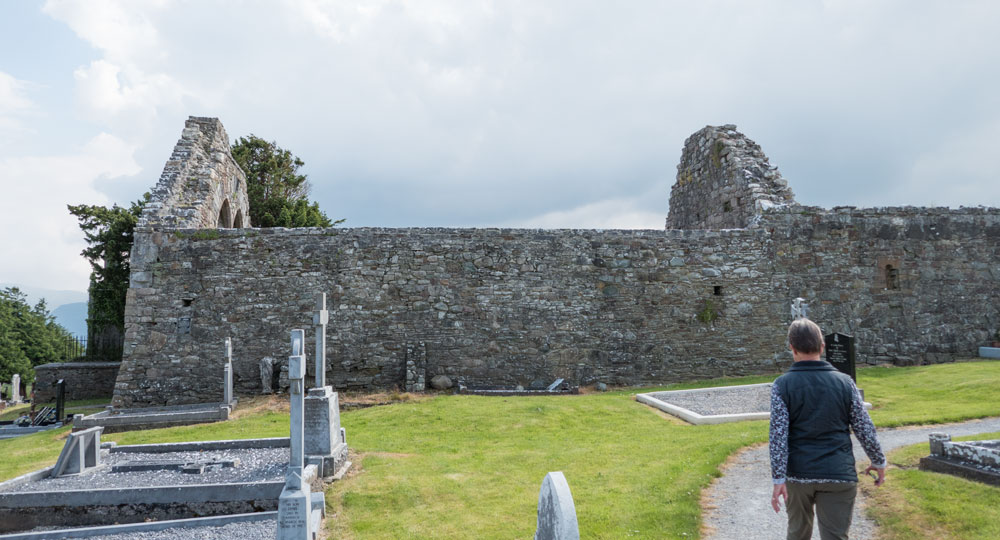
A view of our hotel across the road from the cemetery.
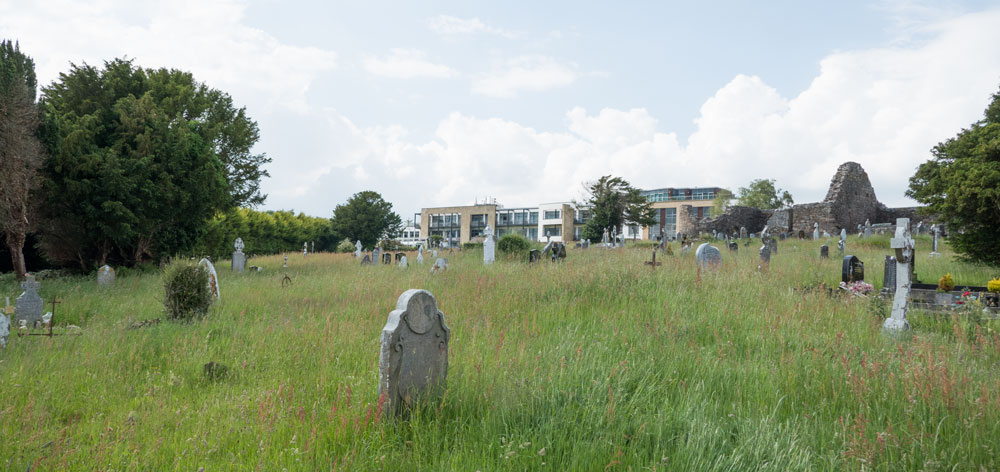
That evening we went to Killeen House Hotel and Restaurant, which was fairly near the hotel. Note that it's still light. It doesn't get dark until after about 11pm and it gets light at maybe 4am - at this time of year.
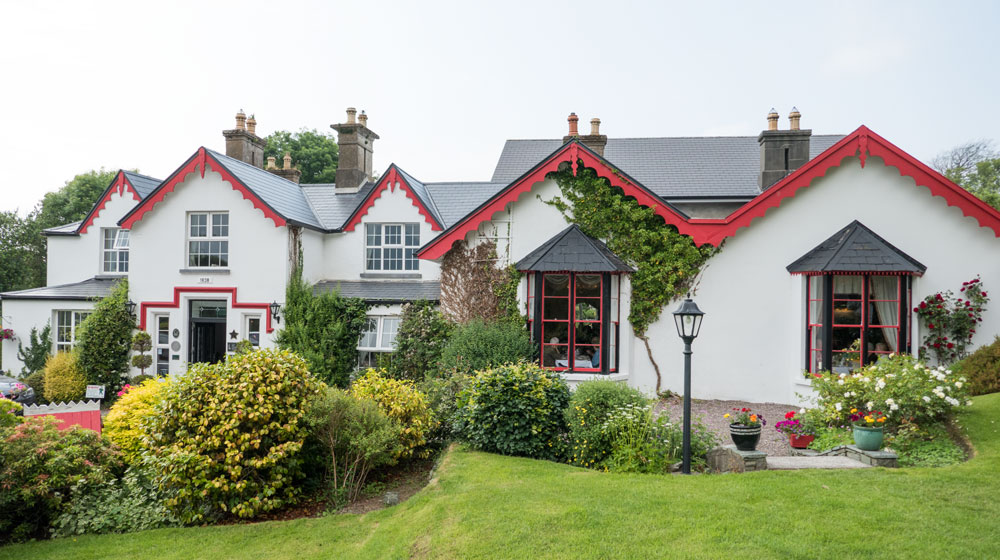
Some of our tour group at dinner.

There's a bar in the hotel and there are golf balls attached to the wall. The bar takes golf balls in payment for a drink. I didn't try it, so maybe you have to offer a ball with an interesting logo.
